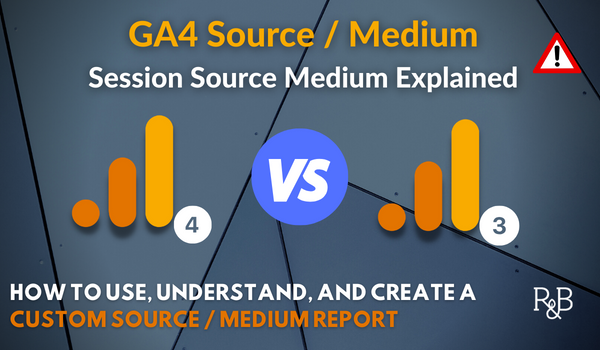Revealing the Impact of Additional Dimension in Google Analytics on Information Analysis and Insights
In the world of information analytics, the utilization of second measurements within Google Analytics has arised as a pivotal tool for removing much deeper understandings and unraveling facility patterns that could or else stay covered. By peeling back the layers of main data sets, secondary dimensions provide a nuanced point of view that enriches the understanding of user behavior, site performance, and the effectiveness of advertising methods.
Discovering the Idea of Additional Dimensions
Second dimensions in Google Analytics supply additional insights by enabling users to evaluate key data in combination with a secondary quality. By including secondary measurements, customers can delve much deeper into the data and uncover important relationships that might otherwise go undetected - what is a secondary dimension in google analytics.
Recognizing the concept of additional measurements is crucial for making the most of the capacity of Google Analytics. It permits customers to segment data efficiently, determine patterns, and make educated decisions based on a much more complete photo of their analytics information. By exploring the various additional dimensions offered in Google Analytics, customers can open new insights and optimize their electronic advertising and marketing initiatives. Essentially, secondary dimensions work as a powerful tool for enhancing data analysis and driving workable outcomes.
Enhancing Information Analysis With Second Measurements
Having established the fundamental understanding of additional dimensions in Google Analytics and their crucial function in data evaluation, the focus currently moves towards leveraging these second attributes to boost the analysis of analytics information (what is a secondary dimension in google analytics). By incorporating second measurements into information analysis, analysts can obtain deeper insights into user behavior, web site efficiency, and advertising performance

Additionally, additional dimensions aid in contextualizing main data metrics by giving extra layers of information. This contextualization help in comprehending the 'why' behind the data fads, assisting experts make notified optimizations and choices to enhance total efficiency. Ultimately, integrating secondary measurements enriches the data analysis process, leading to even more significant insights and tactical activities.
Revealing Hidden Insights With Additional Measurements
Checking out the depths of analytics information with additional measurements reveals beneficial insights that would or else remain covered. By integrating secondary measurements in Google Analytics, organizations can unearth concealed patterns, trends, and correlations that supply a more extensive understanding of customer actions and site efficiency. These added layers of information allow analysts to dig much deeper into the key dimensions, such as web traffic resources or landing pages, and acquire a more nuanced point of view on just how various variables interact with each other.
With the usage of second dimensions, analysts can segment and contrast information throughout numerous measurements, allowing them to identify particular factors that affect customer engagement, conversion prices, and overall success metrics. By pairing the primary dimension of 'tool category' with the secondary measurement of 'age team,' marketers can pinpoint which age demographics favor accessing the internet site via mobile devices versus desktops. This level get more of granularity empowers services to make data-driven choices and enhance their approaches for far better outcomes. Inevitably, uncovering hidden insights with additional dimensions boosts the deepness and accuracy of information analysis, resulting in more enlightened decision-making and boosted performance results.
Leveraging Second Dimensions for Actionable Analytics
Building upon the insights introduced via additional dimensions in Google Analytics, services can currently harness this enriched data landscape to drive actionable analytics and critical decision-making. By leveraging additional measurements, companies can dive much deeper right into their information to extract useful patterns, patterns, and correlations that might have previously gone undetected. This much deeper level of evaluation enables businesses to get a much more detailed understanding of user actions, project efficiency, and total website efficiency.
One key benefit of making use of additional measurements for workable analytics is the capacity to segment data based upon details standards. This segmentation enables organizations to tailor their campaigns and approaches to various audience teams, resulting in much more targeted and reliable advertising efforts - what is a secondary dimension in google analytics. Furthermore, additional dimensions provide Get the facts an even more all natural view of customer interactions, allowing companies to enhance their site material, design, and total user experience
Optimizing Decision-Making With Additional Measurements
To enhance calculated decision-making in analytics, leveraging secondary measurements in Google Analytics can offer a much more nuanced perspective on customer habits and campaign efficiency. By integrating additional dimensions right into information analysis, organizations can dig much deeper right into the specifics of their website visitors' communications and involvement patterns. This added layer of info enables a much more comprehensive understanding of just how various variables, such as demographics, gadgets, or traffic sources, effect key performance indicators.
 click for more is a secondary dimension in google analytics
click for more is a secondary dimension in google analytics"/>
Conclusion
In final thought, the use of additional measurements in Google Analytics plays an essential duty in boosting information evaluation and discovering surprise insights. By exploring this principle, one can gain a much deeper understanding of customer actions and make informed decisions based upon actionable analytics. Leveraging secondary measurements allows for a more detailed analysis of information and makes the most of the efficiency of decision-making processes.
